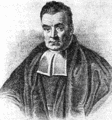Template:Selected anniversaries/April 7: Difference between revisions
No edit summary |
No edit summary |
||
| Line 18: | Line 18: | ||
||1827 – John Walker, an English chemist, sells the first friction match that he had invented the previous year. | ||1827 – John Walker, an English chemist, sells the first friction match that he had invented the previous year. | ||
||Jacques Loeb (b. April 7, 1859) was a German-born American physiologist and biologist. Messaging. Pic. | |||
|| | File:Ernst_Ruhmer,_Technical_World_cover_(1905).jpg|link=Ernst Ruhmer (nonfiction)|1860: Physicist and crime-fighter [[Ernst Ruhmer (nonfiction)|Ernst Ruhmer]] invents a camera which uses the light-sensitivity properties of selenium to record images from past and future events. This type of camera is popular with math photographers, notably [[Cantor Parabola]]. | ||
||Erik Ivar Fredholm (b. 7 April 1866) was a Swedish mathematician whose work on integral equations and operator theory foreshadowed the theory of Hilbert spaces. Pic. | ||Erik Ivar Fredholm (b. 7 April 1866) was a Swedish mathematician whose work on integral equations and operator theory foreshadowed the theory of Hilbert spaces. Pic. | ||
File:Niles Cartouchian.jpg|link=Niles Cartouchian|1867: Gem detective [[Niles Cartouchian]] works with [[Hasan Tahsini (nonfiction)|Hasan Tahsini]] to recover stolen shipment of [[Time crystal (nonfiction)|time crystals (nonfiction)]]. | |||
||1882: Hermann Pokorny born. He was a World War I Austro-Hungarian Army cryptologist whose work with Russian ciphers contributed substantially to Central Powers victories over Russia. Pic. | ||1882: Hermann Pokorny born. He was a World War I Austro-Hungarian Army cryptologist whose work with Russian ciphers contributed substantially to Central Powers victories over Russia. Pic. | ||
Revision as of 15:01, 6 April 2018
1761: Mathematician, philosopher, and minister Thomas Bayes dies. He is remembered for having formulated a specific case of the theorem that bears his name: Bayes' theorem.
1789: Mathematician and physicist Joseph Fourier uses early version of Fourier series analysis to detect and prevent crimes against mathematical constants.
1811: Astronomer, mathematician, and philosopher Hasan Tahsini born. He will become one of the most prominent scholars of the Ottoman Empire of the 19th century.
1860: Physicist and crime-fighter Ernst Ruhmer invents a camera which uses the light-sensitivity properties of selenium to record images from past and future events. This type of camera is popular with math photographers, notably Cantor Parabola.
1867: Gem detective Niles Cartouchian works with Hasan Tahsini to recover stolen shipment of time crystals (nonfiction).
1889: Mathematician Paul David Gustav du Bois-Reymond dies. He worked on the theory of functions and in mathematical physics.
1899: Physicist and academic Petrus Leonardus Rijke dies. He explored the physics of electricity, and is known for the Rijke tube (which turns heat into sound, by creating a self-amplifying standing wave).





